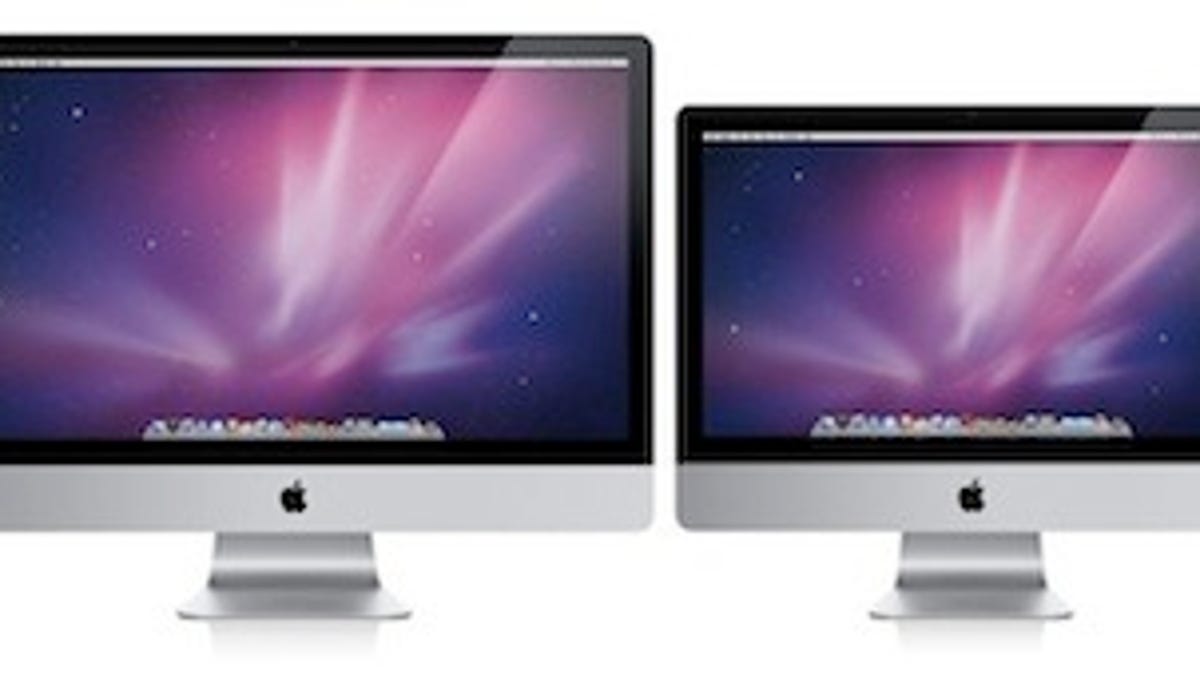The new muscle inside the new iMac, Mac Pro
Apple's refresh of desktop lineup taps Intel chips in a way it never has before.

Apple is tapping Intel chips for its desktop lineup in a way it never has before.
Unveiled Tuesday, updated the iMacs have, for the first time, adopted Intel's Core i3 processor, with some distinct differences between the i3, i5, and i7 models, while the refreshed the Mac Pros tap Intel's most advanced six-core processor, also a first.
So, what should consumers zero in on inside the box? Here's a quick rundown.
Core i3/Core i5 Turbo Boost and Hyper-Threading--most have both, but a of couple processors don't: Apple has gone with Core i3 processors for the first time. The Core i3, as the number suffix indicates, is Intel's low-end core i series desktop processor. In addition to the most salient differences--clock (gigahertz) speed and processor core counts--the biggest variation among the various Core i3 and Core i5 models is that a couple of the iMacs don't have both Turbo Boost and Hyper-Threading. The size of the cache memory is also a distinction.
A primer, first.
Hyper-Threading: This can double the number of tasks--or threads--a processor can execute. So, a two-core processor can handle four threads. This technology is not offered on prior-generation Core 2 chips. Apple describes it as follows: "When you're running multiple applications at once, the Core i5 and Core i7 processors spread tasks more evenly across a greater number of cores."
Turbo Boost: The Core i series of chips (with the exception of the Core i3) use Turbo Boost, which speeds up or slows down individual cores to meet processing or power efficiency needs. This, like Hyper-Threading, is not available on older Core 2 Duo chips. Apple describes it as follows: "Turbo Boost dynamically increases the speed of one or both cores, taking a 2.66GHz MacBook Pro all the way up to 3.33GHz." In other words, processors get automatically "overclocked"--previously the exclusive domain of high-end gamers--when necessary.
Cache memory: Cache memory is built right onto the processor and typically consists of very high speed Static RAM or SRAM. The more cache memory a chip has, the better the performance.
Now, let's see how Apple mix and matches these features on the new iMacs.
--The entry-level iMac (21.5-inch screen) uses the 3.0GHz Core i3, which integrates the minimum 4MB of cache. This processor, however, does not have Turbo Boost.
--Mid-range and high-end 21.5-inch and 27-inch models have 3.2GHz Core i3 and 3.6GHz Core i5 chips, respectively. The 3.6GHz Core i5 chip supports Hyper-Threading and Turbo Boost. Correction: The 3.2GHz Core i3 processor, like other i3s, supports Hyper-Threading only and does not support Turbo Boost.
--Moving up to highest-end 27-inch iMac models adds two more physical cores, i.e., the quad-core i5 and i7. Apple does not specify Hyper-Threading for this quad-core i5 (nor does Intel), so that's a fairly glaring gap between the two processors.
Memory Speed bumped: As Rich Brown points out in his review of the iMac, Apple now uses 1.333GHz DDR3 RAM, compared with 1.066GHz RAM on the older models. This essentially results in better data throughput (increased performance) on demanding tasks.
Graphics: ATI in, Nvidia out: Nvidia got the boot this time around. That doesn't mean for good necessarily as the history of graphics on the Mac bounces around between ATI (now part of Advanced Micro Devices) and Nvidia. The lower-end 21.5-inch iMac uses the ATI Radeon HD 4670 graphics processor (256MB of GDDR3 memory), while the mid-range 21.5 and 27-inch uses Radeon HD 5670 graphics processor (512MB of GDDR3 memory), and the high-end 27-inch packs the ATI Radeon HD 5750 (1GB).
The HD 5670 is called a "respectable mainstream offering" by Tom's Hardware. The 5750 is a step above the 5670.
Raw specs show the 5750 with 720 Stream Processing Units and a graphics engine clock speed of 700MHz. The 5670 has 400 Stream Processing Units and graphics engine clock speed of 775MHz.
The Mac Pro gets six-core and solid-state goodness
Probably the most conspicuous upgrade for the Mac Pro is the option for the six-core Xeon processor.
Apple does a pretty good job of describing the new processor versus the other configurations, so I'll defer to Apple here. "The Mac Pro comes with either one or two processors...Which means that you can have a 6-core Mac Pro at 3.33GHz, an 8-core system at 2.4GHz, or, to max out your performance, a 12-core system at up to 2.93GHz...(the) single-die (single-chip), 64-bit architecture makes 8MB or 12MB of fully shared L3 cache readily available to each of the processor cores. The result is fast access to cache data and greater application performance. " Apple also points out that the 12-core model yields 24 virtual cores.
The new Mac Pro will also be available with the option for up to four 512GB solid-state drives. These SSDs are capable of accessing data at speeds up to 230MB per second--as much as twice the speed of hard drives.
The Mac Pros' ATI Radeon HD 5770 and ATI Radeon HD 5870 have 800 Stream Processing Units/850MHz graphics engine clock speed and 1600 Stream Processing Units/850MHz graphics engine clock speed, respectively. The 5770 is rated at 1.35 teraflops, the 5870 at 2.72 teraflops, with a 128-bit and a 256-bit memory interface, respectively.
The new Mac Pro will be available in August.
Updated on July 28 at 6:00 p.m. PDT: correcting Core i5 cache size and Core i3 Turbo Boost and expanding Mac Pro ATI Radeon discussion.

